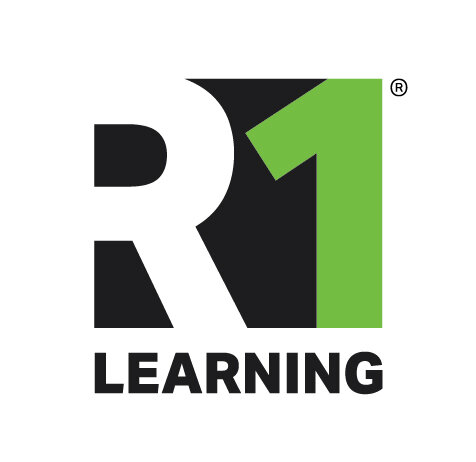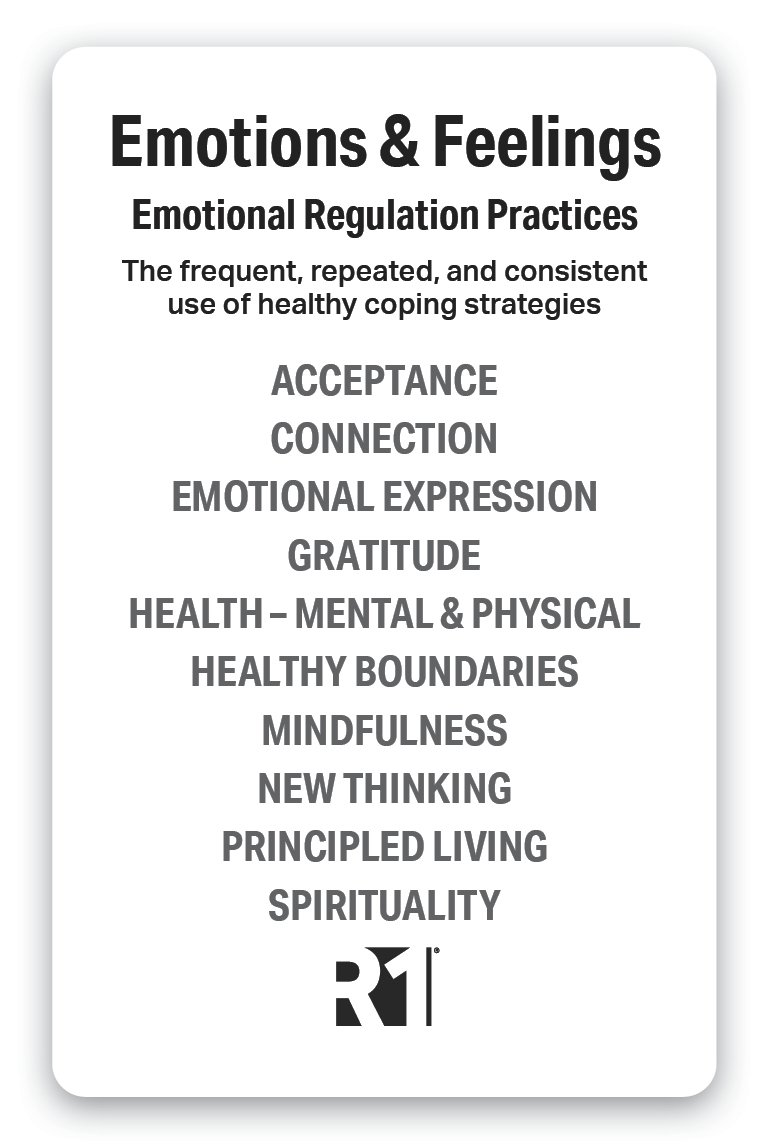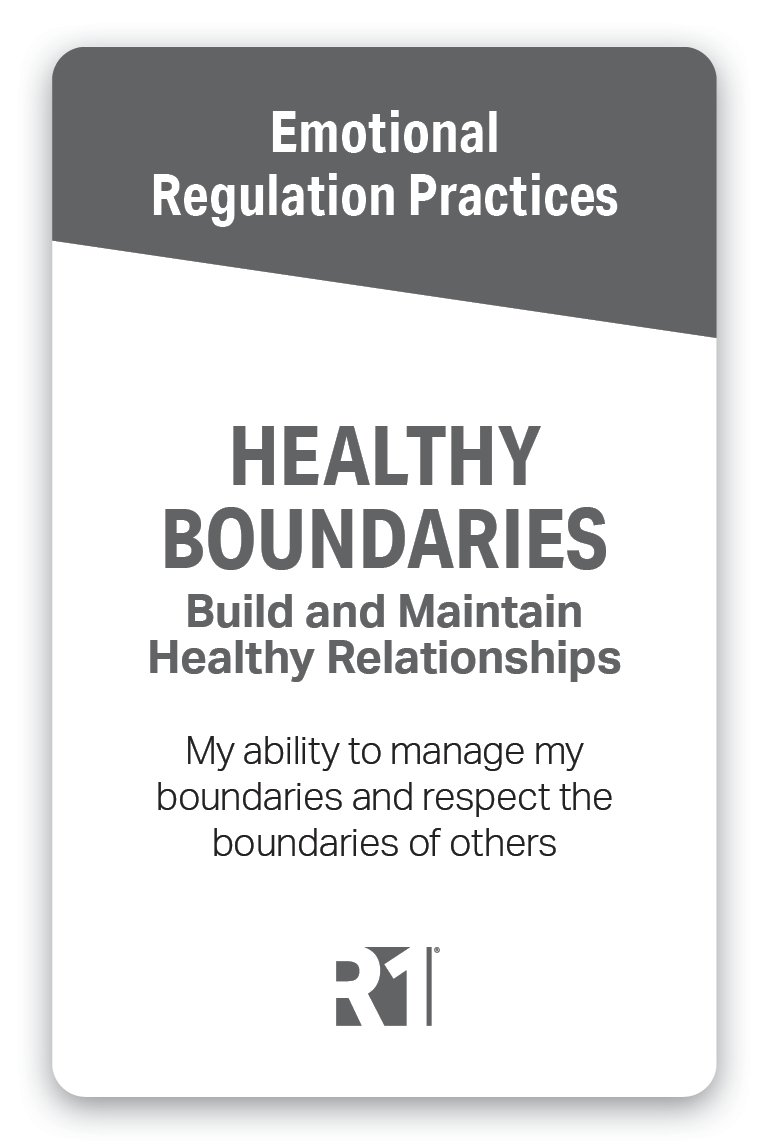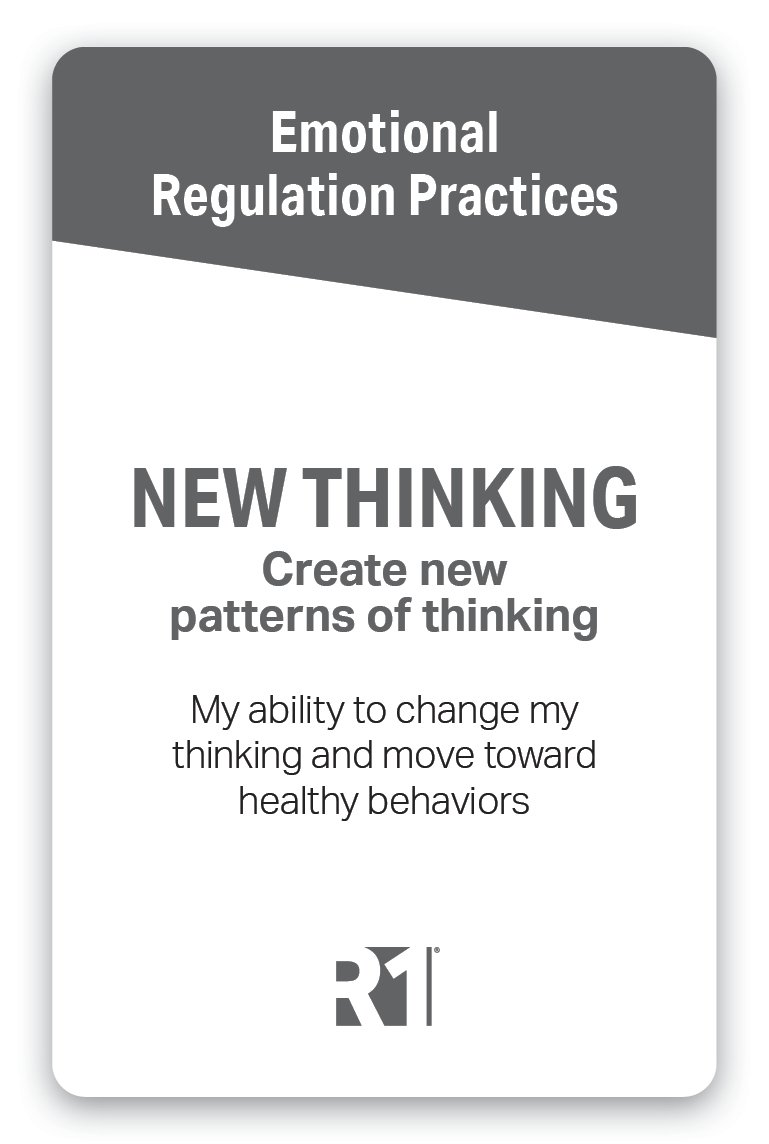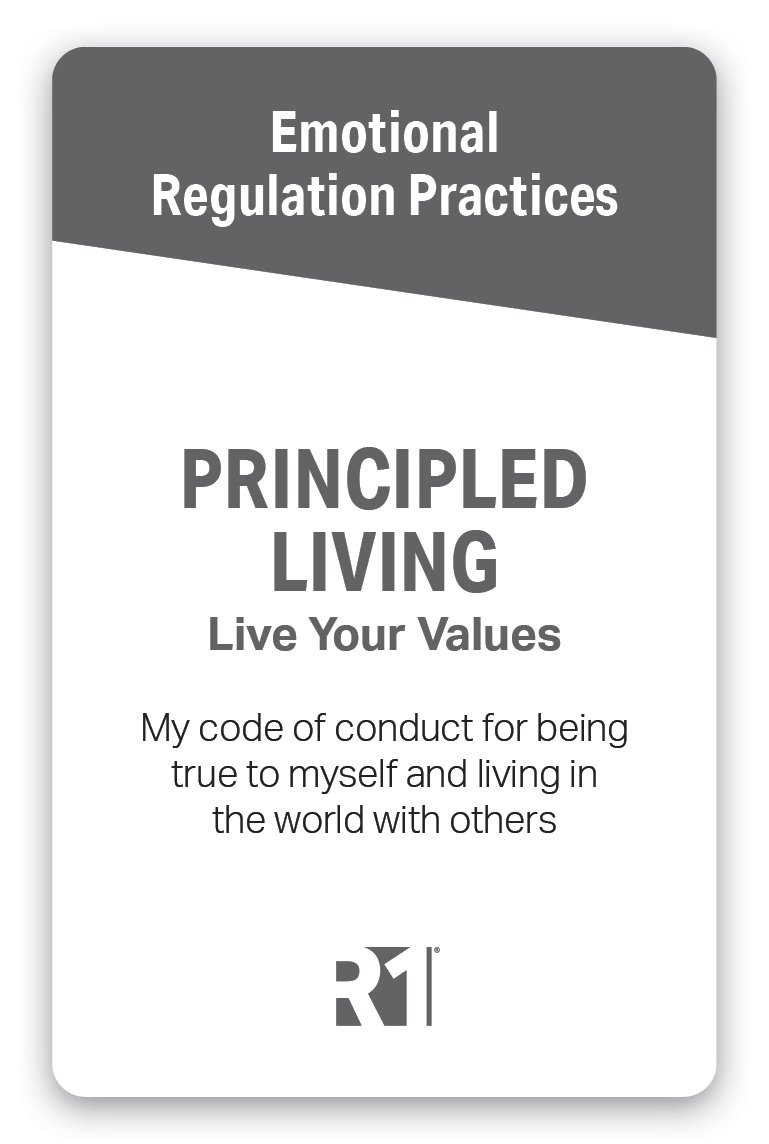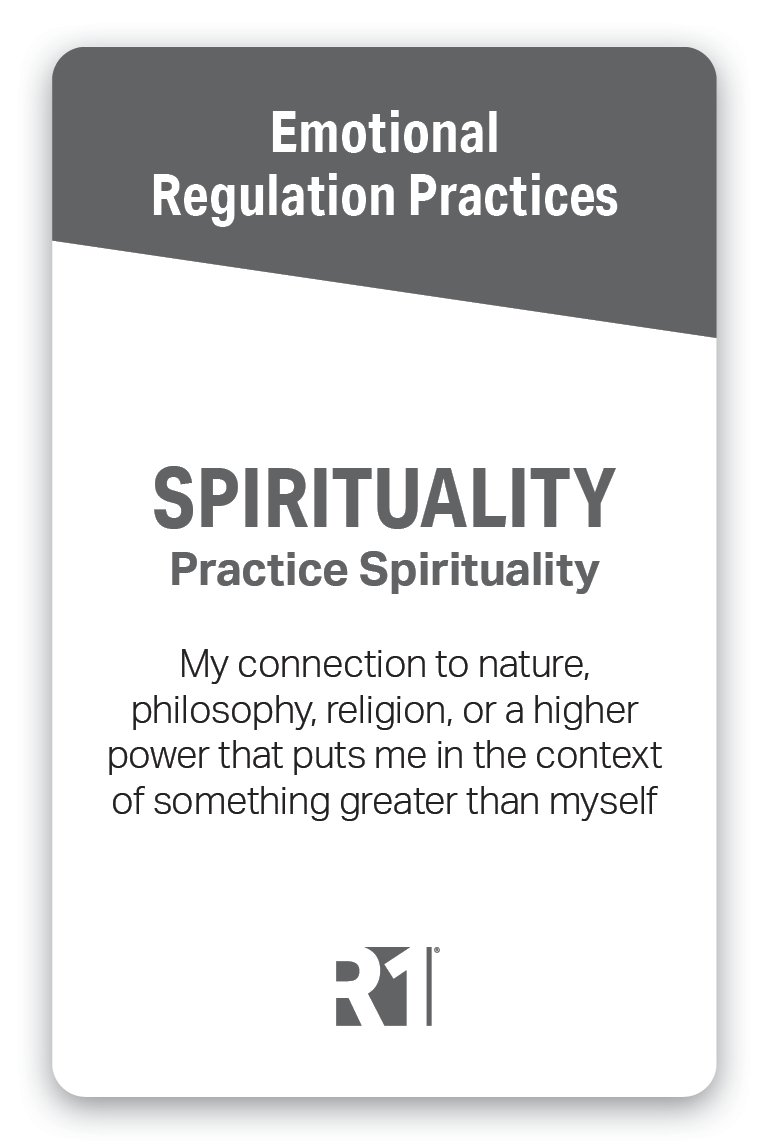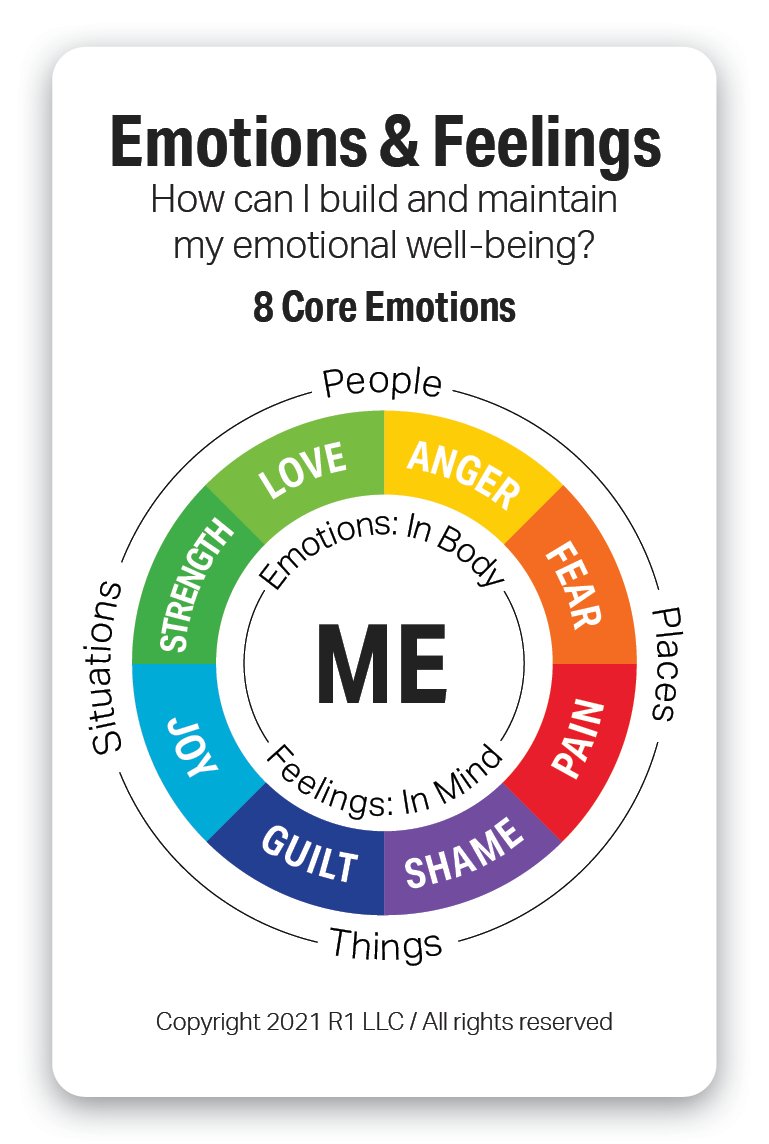10 Emotional Regulation Practices — Which Coping Skills Work Best For Me?
Emotional coping skills are the topic of today’s post and important tools individuals learn on the path of health and wellness. Emotional wellness is central to most evidence-based practices and psychological models including Cognitive Behavioral Therapy (CBT), Dialectical Behavioral Therapy (DBT), Stages of Change’s Emotional Arousal / Dramatic Relief Process of Change, defense mechanisms, relapse triggers, warning signs, and so on, and so on. Most of the R1 topics intersect with emotions and feelings in some way. Emotional wellness is also one of the 8 Dimensions of Wellness as stated by the Unities States Substance Abuse and Mental Health Services Administration ( SAMHSA) which is part of Health and Human Services (HHS). A topic soon to be part of the R1 Learning System. .
Emotional Regulation Practices are coping strategies when emotions (anger, fear, pain, shame, guilt, joy, strength, or love) are physiologically activated by either thoughts or environmental triggers such as people, places, things or situations. Emotional Regulation Practices act to deflect, deescalate, and calm the intensity of ones emotions through cognitive (thoughts) and behavioral processes. These strategies enable individuals to employ healthy coping skills to regulate emotions until they subside.
In developing the R1 content for Emotions & Feelings, specifically our Emotional Regulation Practices, we’ve built from the evidence-based literature referenced extensively in our Emotions & Feelings Facilitator Guide. Our goal in this post is to highlight a broad set of Emotional Regulation Practices, with a few coping skill examples for each, to inspire you to observe your own coping strategies and identify which ones you use in both stressful and not so stressful situations. When emotions such as anger, fear, pain, shame, or guilt get activated, joy, strength, an love too, by either environmental triggers or thoughts, individuals require practical and actionable strategies to help them cope effectively with their emotions until they subside. To maximize your experience with this post, we suggest that you do the following:
Previously on the R1 Blog
Steps for Maximizing this Post
Play the Emotions & Feelings Video for background (3-minutes)
Review the Emotional Regulation Practices and coping skills examples below
Experience Emotional Regulation Practices through the Reflection Activity
Answer the Questions to Explore
Explore R1 Discover — Interactive Engagement Tools
10 Emotional Regulation Practices — Coping Skills Toolkit
The Discovery Cards and R1 Discover App include ten (10) Emotional Regulation Practices with up to twelve (12) coping skill examples for each practice. (See Acceptance and Mindfulness examples below). There are over 100 coping skill examples to choose from that help individuals build or enhance their coping skills toolkit.
Reflection Activity: Examine a situation in your life today
Let’s get started. Take a moment and identify a triggering person, place, thing or situation (or thought) that has activated your emotions and feelings more recently. Now review the Emotions & Feelings card below to identify which emotions are activated when this triggers shows up? How fast do they come and go? How intense are your emotions? How long do they last? Now take a moment to think about what Emotional Regulation Practices are most helpful for you to use when your emotions surface. Scan the 10 Emotional Regulation Practices above and then answer the Questions To Explore below.
R1 Facilitator Guide Activity — Below highlights an R1 situational learning activities that build the skills for change.
Questions to Explore
Answer the questions below for yourself or as part of a group experience:
What trigger did you select that sparks your emotions?
Which emotions and feelings get activated in conjunction with these people, places, things, or situations? How intense are they?
Which of the Emotional Regulation Practices did you pick? What specific coping skills do you find most helpful for you? Explain.
How have you used these in the past? How have they served you?
What is the benefit for you when you use these practices and coping skills?
Does anyone support you with each of these Emotional Regulation Practices? Who?
What is one practice that you have not used in the past that you think will be helpful for you in the future? How will you use it? Explain.
Thank you for reading this post and participating in this activity. Contact us if you would like to learn more about Emotions & Feelings or the R1 Learning System. We look forward to hearing from you.
References:
Emotions Theory
Lazarus RS. “Cognition and Motivation in Emotion.” American Psychologist 46:352–367, 1991
Scherer KR. “What Are Emotions? And How Can They Be Measured?” Social Science Information 44:693–727, 2005
Acceptance:
Blackledge JT, Hayes SC. "Emotion Regulation in Acceptance and Commitment Therapy." Journal of Clinical Psychology 57:243–255, 2001
Hayes SC, Luoma JB, Bond FW, Masuda A, Lillis J. "Acceptance and Commitment Therapy: Model, Processes and Outcomes." Behaviour Research and Therapy 44:1–25, 2006
Lee EB, An W, Levin ME, Twohig MP. "An Initial Meta-Analysis of Acceptance and Commitment Therapy for Treating Substance Use Disorders. Drug and Alcohol Dependence 155:1–7, 2015
Mindfulness:
Chambers R, Gullone E, Allen NB. "Mindful Emotion Regulation: An Integrative Review." Clinical Psychology Review 29:560–572, 2009
Hofmann SG, Asmundson GJ. "Acceptance and Mindfulness-Based Therapy: New Wave or Old Hat?" Clinical Psychology Review 28:1–16, 2008
Teper R, Segal ZV, Inzlicht M. "Inside the Mindful Mind: How Mindfulness Enhances Emotion Regulation Through Improvements in Executive Control." Current Directions in Psychological Science 22:449–454, 2013
Note: References for each of the Emotional Regulation Practices are located in the R1 Emotions & Feelings Facilitator Guide.
Evidence-Based Research
Emotion regulation: Affective, cognitive, and social consequences (James J. Gross, 2002)
“One of life’s great challenges is successfully regulating emotions. Do some emotion regulation strategies have more to recommend them than others?”
“What seems likely to prove essential is having a rich palette of emotion regulatory response options that can be flexibly employed, with a clear appreciation of the relative costs and benefits of using any given regulatory strategy in a particular situation.”
Emotions in uniform: How nurses regulate emotion at work via emotional boundaries (Hayward and Tuckey, 2011)
“When an individual attends to an internally or externally psychologically relevant situation, the situation is appraised to imbue it with personal meaning and relevance. In turn, an emotion is initiated along with the cognitive, physiological, and behavioural response patterns typically associated with that emotion. However, emotions and their response patterns are not fixed. They can be manipulated to change the type, intensity, duration, and trajectory of emotions likely to be or being experienced.”
Acceptance and mindfulness-based therapy: New wave or old hat? (Hofmann and Asmundson, 2007)
“The objective of this article is to juxtapose these two treatment approaches [Cognitive Behavioral Therapy (CBT) and Acceptance and Commitment Therapy (ACT)], synthesize, and clarify the differences between them. The two treatment modalities can be placed within a larger context of the emotion regulation literature.”?
Copyright 2023 R1 Publishing LLC / All Rights Reserved. Use of this article for any purpose is prohibited without permission.
R1 Learning Tools and Resources
The R1 Discover App and the Discovery Cards are interactive and engaging tools for exploring these topics with individuals or groups. Integrating these tools into your in-person or virtual settings will allow individuals to build their own vocabulary, think about these concepts concretely, and put their choices into action. Visit the R1 Store to learn more about this topic and more.
Here are a few ideas to help you learn more about R1 and engage others on this topic:
Share this blog post with others. (Thank you!)
Start a conversation with your team. Bring this information to your next team meeting or share it with your supervisor. Change starts in conversations. Good luck! Let us know how it goes.
Visit www.R1LEARNING.com to learn more about R1, the Discovery Cards, and how we’re creating engaging learning experiences through self-discovery.
